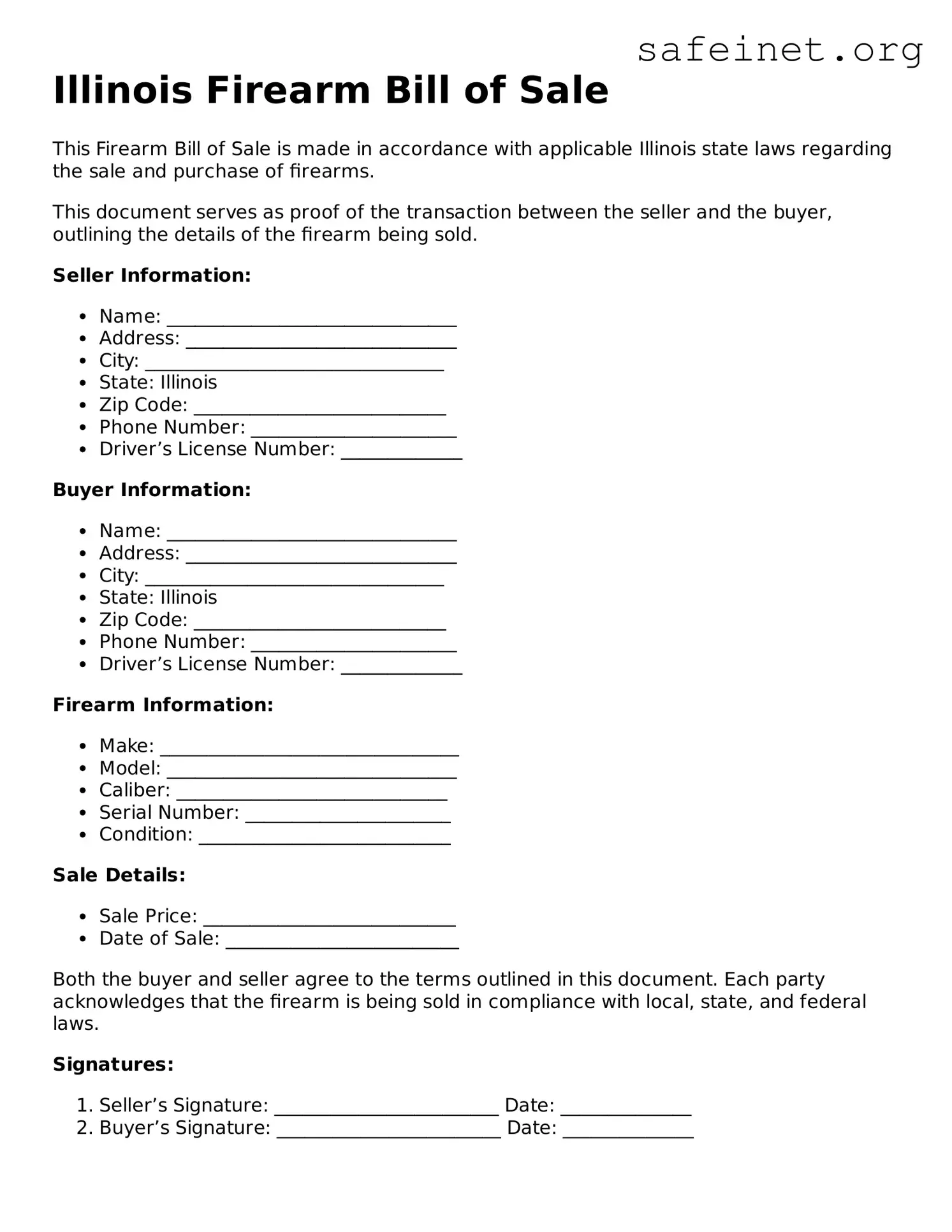What is the Illinois Firearm Bill of Sale form?
The Illinois Firearm Bill of Sale form is a written document that records the sale or transfer of a firearm between two parties. This form serves as proof of the transaction and includes important details such as the names of the buyer and seller, the date of the sale, and a description of the firearm being sold, including its serial number.
Is the use of the Firearm Bill of Sale form mandatory in Illinois?
No, using a Firearm Bill of Sale form is not legally required in Illinois. However, it is highly recommended as it helps both the buyer and seller maintain a record of the transaction. This documentation may prove useful in case of future disputes or legal inquiries regarding ownership.
What information must be included in the Firearm Bill of Sale?
The form should contain several key pieces of information, such as the names and addresses of both the buyer and the seller, the date of the sale, a detailed description of the firearm—including make, model, and serial number—and the agreed-upon sale price. Additionally, both parties should sign and date the document to ensure its validity.
Can the Firearm Bill of Sale be used for private sales and transfers?
Yes, the Firearm Bill of Sale can be used for private sales and transfers between individuals. It is essential for those engaging in private sales to have a written record of the transaction to clarify ownership and protect themselves against potential legal issues.
What if the firearm is sold 'as-is'?
When a firearm is sold 'as-is,' it means that the seller is not providing any warranties or guarantees regarding the functionality or condition of the firearm. Buyers should carefully inspect the firearm before completing the sale, and this should be noted on the Bill of Sale to avoid any misunderstandings later on.
Do I need a background check when using the Firearm Bill of Sale?
In Illinois, a background check is required for sales conducted through licensed dealers. For private sales between individuals, there is currently no law mandating a background check; however, it is recommended to protect all parties involved in the transaction.
How long should the seller keep a copy of the Firearm Bill of Sale?
Sellers should keep a copy of the Firearm Bill of Sale for their records indefinitely. This can provide proof of the sale if any legal questions arise in the future regarding the firearm or its ownership.
What happens if the buyer is not legally permitted to own a firearm?
If the buyer is not legally permitted to own a firearm, selling the firearm to them may result in severe legal consequences for the seller. It is critical to verify that the buyer has the legal right to purchase a firearm. Utilizing the Firearm Bill of Sale form can help document this validation process.
Are there any penalties for not using a Bill of Sale for a firearm sale?
While there are no specific penalties for failing to use a Bill of Sale in Illinois, not having one can lead to complications related to firearm ownership and legality. If a dispute arises over ownership or if the firearm is used in a crime, the absence of a Bill of Sale may complicate legal matters for both parties.
Can electronic signatures be used on the Firearm Bill of Sale?
Yes, electronic signatures can be used on the Firearm Bill of Sale, provided both parties agree to this method of signing. It is important to ensure that a reliable electronic signature platform is used to maintain the integrity and legality of the document.
